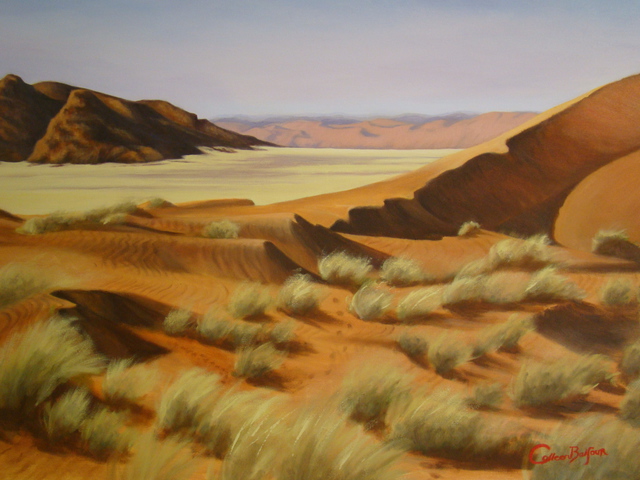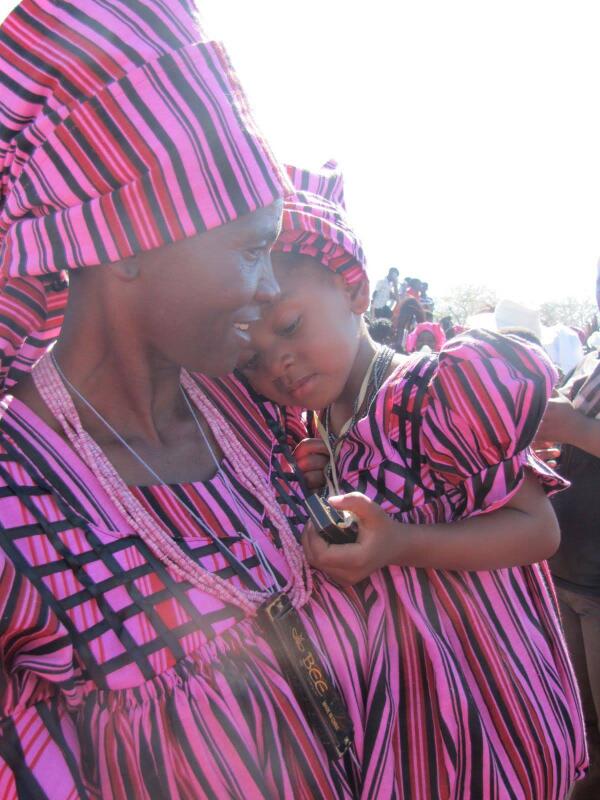Namibian art goes
back to the earliest days of antiquity. Rock art has been found in caves and
shelters that were close to where these nomadic tribes had set up temporary
settlements. Evidence of early stone tools and weapons has also been found in
these locations as well. Many of these rock drawings depict their everyday
life, their hunting expeditions, and their spiritual beliefs. Their paints were
made from materials that were readily available to them in the desert, and
paintbrushes were made from animal or human hair. Sharpened stones were used
for carving.
However, rock art
wasn’t the only art Namibians produced. They were also skilled at creating art
out of everyday utensils and tools. Items such as baskets and pots were woven,
molded, and painted in a variety of subtle geometric designs. Belts, bracelets,
and leather pouches were decorated with beads, ivory, and stones. Even musical
instruments such as drums, rattles, and thumb pianos (mbira) are also decorated
with carved designs. Textile arts were also a necessity: embroidery, weaving,
and appliqué were used for wall coverings, clothing, tablecloths, rugs, and a
number of other items.
As Europeans moved
into the land and took it over, they also introduced a variety of styles of European
painting. Landscapes were quite a popular thing to paint as was the abundant
African wildlife. Namibian artists as well as European and foreign artists flocked to the
rural areas to paint the view.
Even after
independence, Namibian artists continued to utilize these European artistic
styles and techniques. They merged their own culture into their art, and it
became an expression of their identity, a means to tell a story, and to depict
their life and their struggles. It’s hard to say if there’s a unifying theme or
style among artists because each is unique. Perhaps the land and the people remain the
unifying element.
Technically
speaking, the first pieces of literature were probably those rock drawings. But
the Owambo tradition is considered one of the earliest forms of literature in
Namibia. As Europeans ventured into the area as explorers and missionaries,
they wrote about what they saw. However, they wrote from their point of view,
not necessarily about the people or their history or way of life. For the
people who lived here, oral traditions were at the heart of their storytelling
for many of the early times.
As Christianity
moved through the land, it influenced their literature in many ways. For one,
there were cases where they downplayed the local cultures in lieu of European
ways. However, in many areas, the church was responsible for education and the
teaching of written language. Much of the early literature was in the form of
poetry, short stories, and traditional tales that have been passed down from
generation to generation.
Literature from
colonization to today is mainly written in English, Afrikaans, or German. Many
Namibian writers have had their works published and have made significant
contributions to modern African literature. Common themes include women’s
rights, the rise to independence and the shedding away of colonialism, the
struggles of oppression, and cultural identity. One writer, Neshani Andreas,
writes about women’s issues in her novel The
Purple Violet of Oshaantu. Giselher W. Hoffman is an example of a Namibian writer
who has produced several novels written in German.
Up next: music and
dance






No comments:
Post a Comment